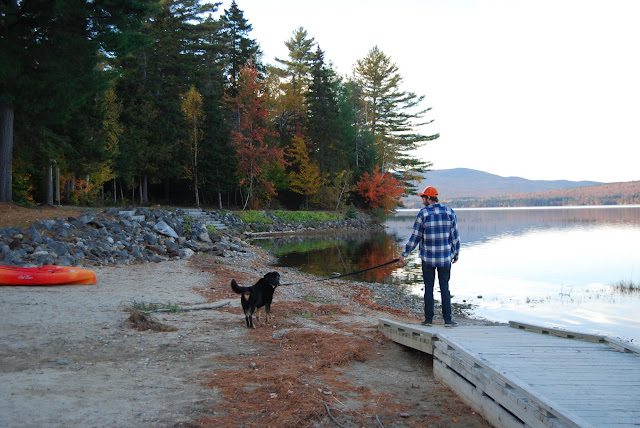 |
| My worn in Bean boots, in front of the giant Bean boot. |
This site is one every self respecting Mainer, northern or southern, should know: LL Beans, or just Beans as the locals call it (honestly, I just realized while looking at their website writing this that there's no s in the name, everyone just calls it Beans). The drive from Portland is not that far, about 20 minutes if traffic's not too bad. Finding a parking spot, even in the Christmas shopping season was really easy, thanks to the large amount of renovations they've done in the area the last few years. The store was really busy, so much so I didn't even bother to try shopping. I wasn't interested either way, I own enough flannel. Every where you went in the store it was totally full of people.
In the last couple years, as they've opened up smaller related stores (such as as a bicycle store, home store, etc) in the area they've done a lot more to the main store, the "flagship store" as they call it. They put a big boot statue outside, a fish tank inside, and a bunch of smaller exhibits about different products in the stores history. I remember even when I was a kid, not too many years ago, they had the one main store, the factory store down the street, and that was it. Now they have multiple stores, a ton of different departments, all within the last 12 years or so. Judging by their store, they appear to be doing quite well, despite the oft talked about economic downturn.
Historical Significance of LL Bean
The LL Bean store is in one of the Maine's longest lasting and successful companies, if not literally, it still is in the eyes of most people. Maine and LL Bean go together in many ways. They are economically linked, according to Forbes it is the 259th largest privately owned company in America, and in 2005 made $1.47 billion dollars. They are also culturally linked, as the products of Beans are as big of a part of Maine culture as lobster shacks, trees, and Moxie. Whether it's true or not, a lot of Maine people have the impression that the rest of the country see us all as Bean models, and to some extent it's true (name me one Maine kid who didn't have this backpack as a kid: http://www.llbean.com/llb/shop/62855?feat=816-CL1). A worn pair of Bean boots and a flannel the unofficial Maine uniform for 9 months of the year.
 One way LL Bean is a huge part of Maine culture, and a way I didn't realize until recently, is the amount of jobs it provides. Forbes lists them as employing only 4,300 people, but it seems like much more. It is entirely possible that every resident, if not knowing someone directly, knows someone who knows someone who has worked there, or is working there. I myself can think of plenty of people I know who have been involved there, my own father has worked there for many years longer than I've been alive. I realized this lately while reading about the automotive industry in Michigan. I think it's a fair comparison. The auto industry does provide many more jobs, but Michigan also has more then 9 million more citizens. Just in terms of impact on the areas they are based, I think it's easy to see how similar they are.
One way LL Bean is a huge part of Maine culture, and a way I didn't realize until recently, is the amount of jobs it provides. Forbes lists them as employing only 4,300 people, but it seems like much more. It is entirely possible that every resident, if not knowing someone directly, knows someone who knows someone who has worked there, or is working there. I myself can think of plenty of people I know who have been involved there, my own father has worked there for many years longer than I've been alive. I realized this lately while reading about the automotive industry in Michigan. I think it's a fair comparison. The auto industry does provide many more jobs, but Michigan also has more then 9 million more citizens. Just in terms of impact on the areas they are based, I think it's easy to see how similar they are.































